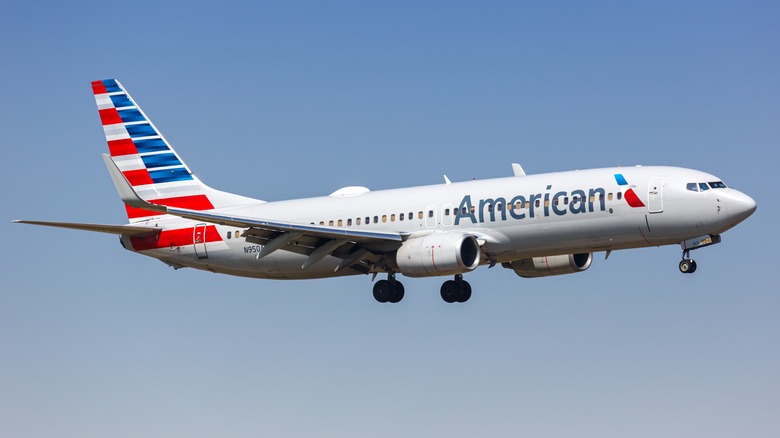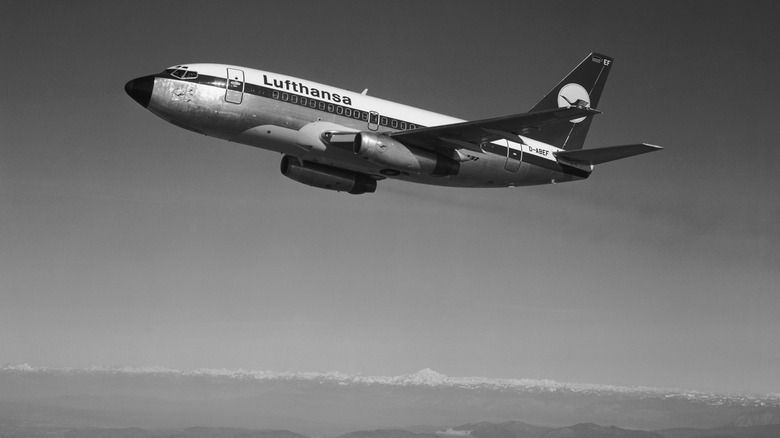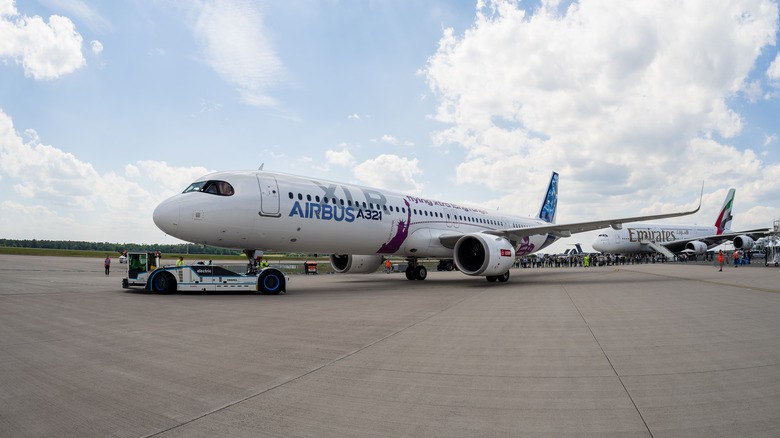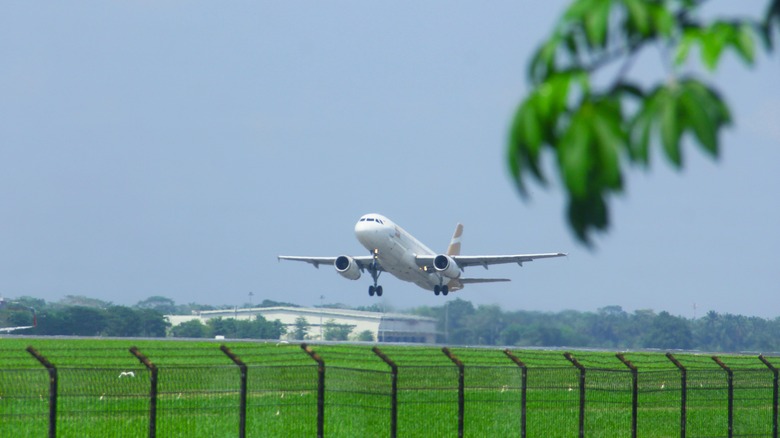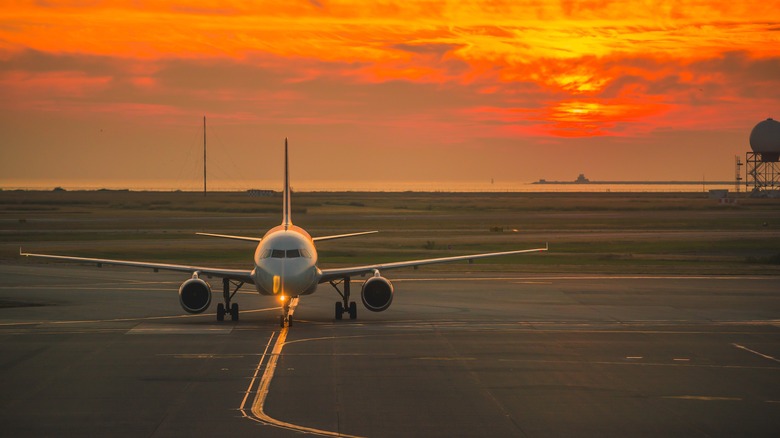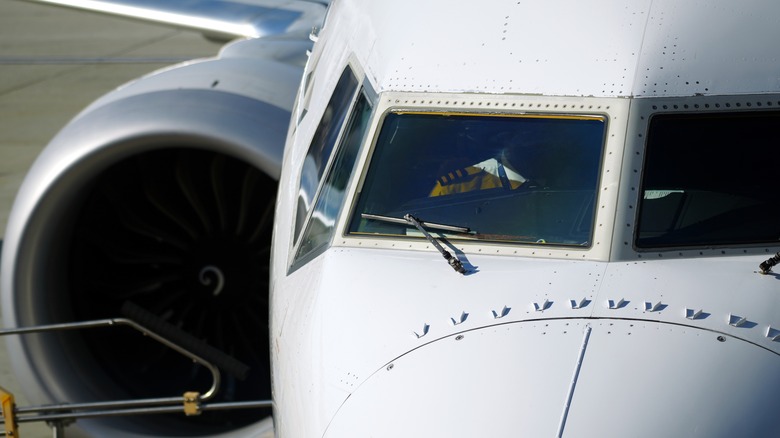Boeing 737 Vs Airbus A320: Size, Range, And Key Differences That Set The Two Apart
The United States' Boeing and the European Airbus have long been competing for their share of the lucrative global aviation markets. The former was established by William E. Boeing in 1916, while the European collaboration that is Airbus Industrie was officially born in 1970. Both international heavyweights, of course, have striven to outdo the other in pursuit of profits for decades.
Healthy competition, as we know, can be great for either side of a rivalry, and some of the brands' greatest successes have surely derived from the fear that the other may accomplish something first. An inevitable effect of this is that some of Boeing and Airbus' aircraft have been rather similar to each other. One of the highest profile rivalries in terms of aircraft families has been that between the Boeing 737 and the Airbus A320. As narrow body airliners, they have their likenesses in terms of form and function, but they're also absolutely distinct models with some key differences.
In this piece, we'll review some specs of the models past and present, their respective variants, their size and capacity, and more factors. It's a battle of two sleek and slimline jets that have dominated the world's skies for decades.
The Airbus A320 is larger than the Boeing 737
The Boeing 737 family began with the 737-100, which made its first flight in April 1967. Boeing press materials would make the aircraft's purpose clear: It was "designed to operate over short to medium ranges from sea level runways of less than 6,000 ft (1,830 m) in length." In order to best serve this purpose, it needed to be quite a svelte model in the company's lineup. It was 94 feet long, with a maximum takeoff weight of 97,000 pounds and a two-class capacity of 85 passengers. It had a wingspan of 93 feet and was 37 feet tall.
Airbus' A320 was introduced almost two decades later, making its debut in March of 1984. It, too, was intended to expand the brand's service capacities with a slimline option, albeit one that's a little larger overall than the 737. The A320 debuted at approximately 123 feet long with a wingspan of around 112 feet, along with a weight of almost 170,000 pounds. In total, it had room for 180 people.
In short, the two models were designed for a very similar role: to offer airports and customers something larger aircraft could not, while not being so small as to greatly restrict the routes they could serve. In terms of their dimensions, though, there's no denying that the A320 debuted as a rather larger model.
The latest Airbus A320 has a greater range than its competitor Boeing 737
Effective range is key to the utility of an aircraft, regardless of its size. On that note, let's take a closer look at the newest models of the two aircraft. In the Airbus corner, we have the A321XLR, the Xtra Long Range model which, at the time of this writing, has achieved European Aviation Safety Agency (EASA) certification and is on its way to full-scale service. The latest 737, meanwhile, is the 737 MAX 10, which is presently awaiting certification along with the MAX 7.
The XLR's primary selling point is set to be, as its name implies, its range. In September 2023, Airbus' Ludek Jando stated that the aircraft boasts a new "rear center tank with a capacity of 12,900 liters of fuel. Along with an optional additional center tank, it extends the A321XLR's maximum range to 4,700 nautical miles." That equates to about 5,400 miles. By contrast, Boeing's 737 MAX 10 offers a maximum range of 3,560 miles, outdone in that regard by the fascinating Boeing Max 8 jet's roughly 4,000 miles.
For narrowbodies like the A320 and 737, drawbacks typically include dramatically lowered range in comparison to larger models, owing to a cut in fuel capacity. Both aircraft families have developed in this regard as time has gone on, with the Boeing 737-100 leaping from around a 1,772-mile range to the 737-200's 2,646-mile range. Ultimately, though, the A321XLR has a greater range than its rival.
The Airbus has a larger passenger capacity
Of course, commercial jets are primarily operated for one reason: To make money for the companies that fly them. As such, it's crucial to try to both fill as many seats as possible and have as many seats as practically possible in the first place. Larger aircraft naturally have more space for customers, but the capacities of single-aisle models have also evolved too.
Boeing's 737-100 launched with an exit limit of 124 people, which increased to 136 with the 737-200, which made its service debut in 1968. The 300 model upped capacity to 149, and the current roster of MAX models (though this suffix has since been removed from their names) has a total capacity of 172 (737-7), 210 (737-8), 220 (737-9), and 230 (737-10) seats.
Meanwhile, Airbus notes that the A320ceo can accommodate as many as 180 people, but its larger relative, the A321neo, has an impressive full capacity of 244. Seating can be adjusted to the needs of the flight in question, so neither aircraft will necessarily be able to hit these maximum values every time. However, this is another area in which the two models, taken in the wider context of their families and variants, are very similar. Nonetheless, the A321neo is potentially the largest of them all, by virtue of its 113-foot cabin and 146-foot total length. That is ultimately reflected in passenger space.
Which flying experience for pilots and passengers is better is a toss-up
With the popular A320 passenger jet family being typically larger than its Boeing counterpart, it stands to reason that its capacity is also greater overall. Economy seating for the latter is 0.7 inches smaller in width than the former, which boasts 18-inch seats. The customer who values space will appreciate this factor, as well as that wider cabin, though the smaller windows may not suit those who covet a window seat.
What, though, of the pilot's experience? This was perhaps the most significant aspect that set the two aircraft apart when they were each introduced. In an Airbus retrospective, the company's Roger Béteille stated that "having to make a significant step forward in technology, like fly-by-wire, it was considerably easier and less risky to enter the field with a smaller aircraft than with a big, long-range aircraft." Fly-by-wire technology, described by Airbus as featuring a "computer [that] 'drives' the aircraft's flight controls," was a key part of the A320's development and would be significant in easing usability and pilots' work with different models across the Airbus range.
The Boeing 737 lacked this functionality, instead offering standard controls through a pulley system supported by hydraulic power. Preferences for the pilot, then, will depend on whether that element of automation or more direct control is preferred.
Significant differences, significant similarities
It can even be difficult to tell the Boeing 737 and Airbus A320 apart because they are such close competitors. As a result, they are fundamentally very similar aircraft. Only the seasoned eye will notice more subtle distinctions such as the characteristic sharp angle of the nose of the former, as well as the Boeing model's engine mounting position, which is lower to the ground than that of its Airbus counterpart.
In the purposes they were designed for and their impact, though, it's difficult to choose between them. They are two of the most enduring and popular aircraft in the single-aisle arena, and each family has undergone a decades-long process of refinement. The shared popularity of the two is emphasized by the fact that, in October 2019, the A320 was the best selling airliner on the planet, achieving 15,193 sales to the Boeing model's 15,136. The 737, naturally, held the top spot before this.
This isn't to say, though, that there aren't big differences. The A320's general larger size and innovative fly-by-wire control system from the very beginning made the two planes fundamentally different from each other, even though there's often little to separate them in terms of performance. When considering factors such as cruising speed, topping out at mach 0.79 for the A320 and 0.78 for the 737, you can tell how truly evenly-matched these arch nemeses are.
